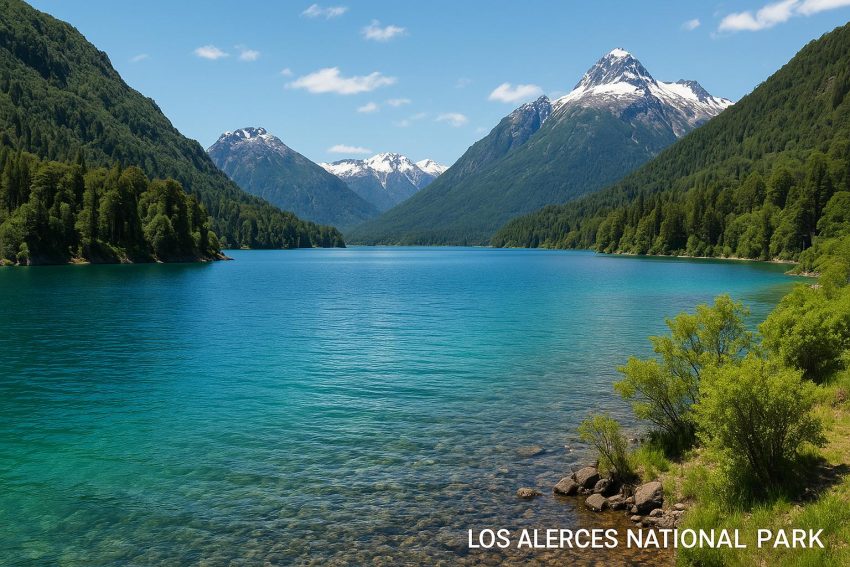Introduction to Los Alerces National Park
Los Alerces National Park is an important conservation area and a captivating destination located in the Chubut Province of Argentina. Established in 1937, the park spans approximately 2,630 square kilometers and is celebrated for its awe-inspiring landscapes, which include lush forests, pristine lakes, and majestic mountain ranges. The park derives its name from the ancient alerce trees (*Fitzroya cupressoides*), a key element of this unique ecosystem.
Ecological Significance
The ecological significance of Los Alerces National Park is profound. One of the park’s defining characteristics is its diverse array of flora and fauna. Alerce trees are among the oldest living species on Earth, with some individual trees exceeding 2,600 years in age. These trees are a critical focus of the park’s habitat, playing an essential role in the ecosystem.
The park’s vegetation is primarily composed of species native to the Patagonian forests, such as the lenga and coihue trees. These forests provide vital services to the environment, including carbon sequestration and stabilization of the local climate, which helps mitigate the effects of global climate change.
Moreover, the park serves as a sanctuary for a variety of wildlife. The huemul deer, a native species, is of particular interest due to its endangered status. Conservation efforts are vital to ensuring the survival of this species and maintaining the region’s biodiversity. Birdwatchers can enjoy spotting a range of avian species, making Los Alerces a haven for biodiversity enthusiasts.
Geographical Features
Los Alerces National Park is defined by its complex topography, shaped by glacial activity over thousands of years. The geographical features of the park include a series of spectacular lakes, with Lake Futalaufquen being among the largest and most widely visited. Visitors are often drawn to the serene beauty of Lake Menéndez and Lake Rivadavia, which add to the park’s allure with their crystal-clear waters.
These lakes are interconnected through a network of rivers and streams, contributing to the park’s rich ecosystem. The intricate network supports diverse aquatic life and represents a fascinating area of exploration for researchers and nature lovers alike.
The mountainous terrain within Los Alerces belongs to the southern Andes, offering some of the most striking views imaginable. This region is not only a visual delight but also a playground for outdoor enthusiasts looking to engage in activities such as hiking, trekking, and mountaineering. The varied elevation provides challenges and opportunities for all levels of outdoor adventure seekers.
Cultural and Historical Context
In addition to its natural wonders, Los Alerces National Park holds significant cultural and historical value. The area was originally inhabited by indigenous communities, whose legacy is preserved through the archaeological sites scattered across the park. These sites provide valuable insights into the traditions and daily lives of the region’s early inhabitants.
The park’s designation as a UNESCO World Heritage Site marks its global importance, highlighting both its ecological and cultural richness. As a World Heritage Site, Los Alerces benefits from strengthened conservation measures and heightened international awareness, ensuring its unique features are safeguarded for future generations.
Visiting Los Alerces National Park
Los Alerces National Park is accessible to visitors throughout the year, though most opt to travel during the warmer months from December to March. The park offers a range of recreational activities that allow visitors to engage directly with its natural beauty. From camping under the open sky to kayaking on tranquil lakes, the park provides numerous opportunities for adventure.
Wildlife observation is an essential part of the visitor experience, with several trails of varying difficulty enticing visitors to explore the park’s picturesque landscapes. These trails offer the chance to encounter rare wildlife species and marvel at the stunning vistas that define this special region.
Those interested in planning a visit can access further details on the official Los Alerces National Park website.
In summary, Los Alerces National Park is an indispensable ecological and cultural asset. It preserves ancient alerce forests and serves as a bastion for numerous plant and animal species. The park’s breathtaking landscapes and rich history make it an essential destination for anyone interested in nature and history. Whether drawn to its ecological significance or the allure of its scenic beauty, Los Alerces National Park promises a memorable experience for all who visit.

